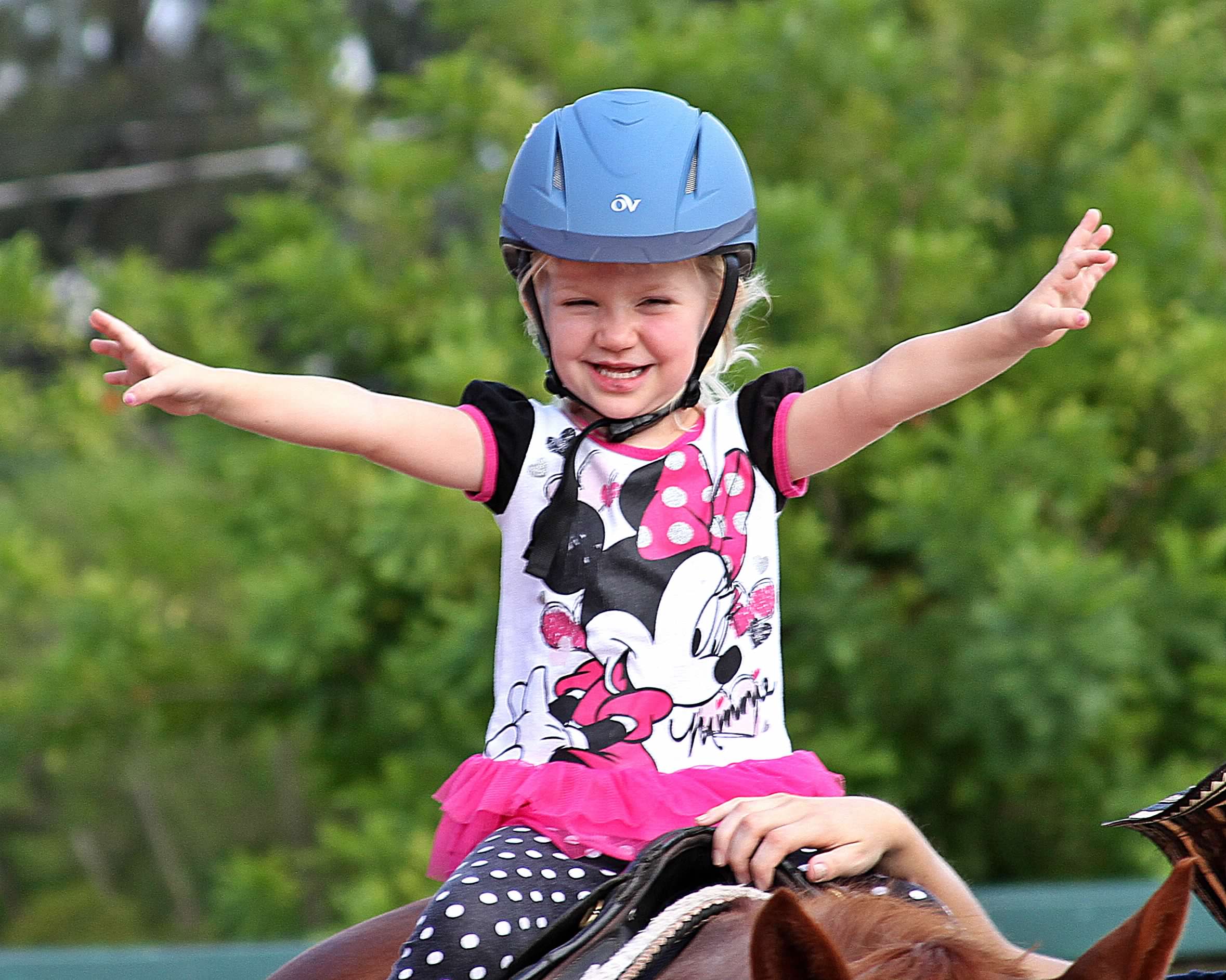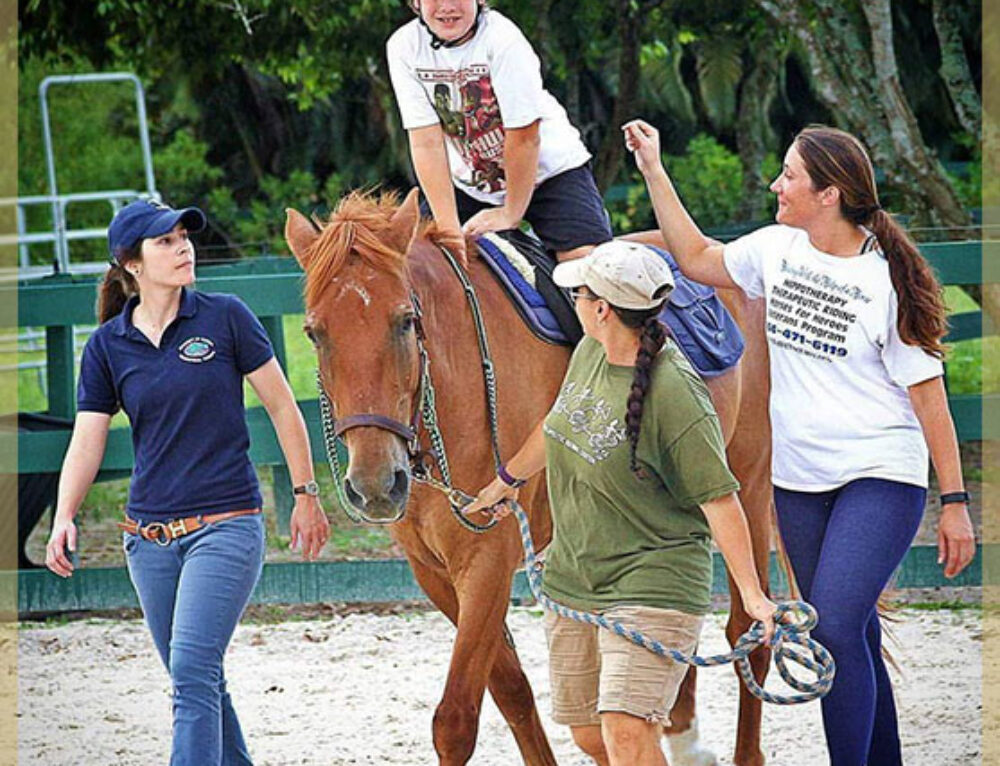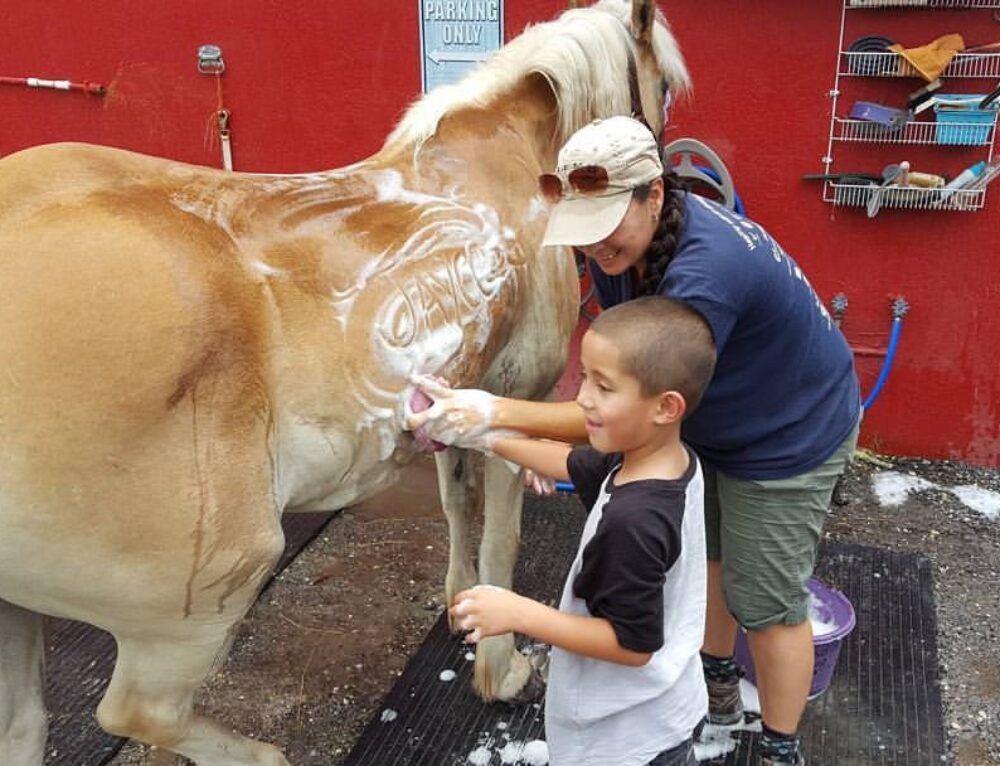How does Hippotherapy help people on the Autism Spectrum?
In honor of Autism Awareness, I’d like to clarify, and possibly even introduce Hippotherapy to those of you seeking treatment alternatives for children on the Autism spectrum.
What is Hippotherapy?
Hippotherapy is a licensed therapist using the horse’s movement as a tool to help a client reach a specific goal. One example might be for a child with a diagnosis of Cerebral Palsy. In this case, her goal might be to walk 25 feet without the use of a walker. A Physical Therapist might incorporate the use of a horse into this child’s Plan Of Care by having them “post” or rise up and down using their legs as the horse is being led forward in a straight line. This will help strengthen the child’s legs, therefore, making it possible to walk longer distances without using the walker.
The American Hippotherapy Association defines Hippotherapy as follows:
The term hippotherapy refers to how occupational therapy, physical therapy, and speech-language pathology professionals use evidence-based practice and clinical reasoning in the purposeful manipulation of equine movement as a therapy tool to engage sensory, neuromotor, and cognitive systems to promote functional outcomes. Best practice dictates that occupational therapy, physical therapy, and speech-language pathology professionals integrate hippotherapy into the patient’s plan of care, along with other therapy tools and/or strategies.

What is Autism?
Autism as defined by the Autism Society is a complex, lifelong developmental disability that typically appears during early childhood and can impact a person’s social skills, communication, relationships, and self-regulation. Autism is defined by a certain set of behaviors and is a “spectrum condition” that affects people differently and to varying degrees.
This will often appear as a child repeating sounds or phrases (echolalia), repetitive movements, preference for sameness and difficulty with transition or routine, rigid or highly restricted and intense interests, extreme sensitivity to or significantly lower sensitivity to various sensory stimuli.
How does incorporating Hippotherapy into a child’s Plan of Care help with the challenges of Autism?
Hippotherapy is an effective tool for treating autism because it provides strong sensory stimulation to the rider’s joints and muscles. Visual stimulation occurs with watching other riders. Hearing the sound of horse hoofs and smelling the barn aromas impact other senses. Hippotherapy impacts all the child’s senses!
Communication and auditory processing goals are addressed during a hippotherapy session when the therapist asks the rider to follow 1 or 2 step directions, such as giving a “high 5” or turning around backward. The rider is encouraged to communicate by telling their horse to go, either by verbal commands like “go” or “walk-on”, or by actions such as tapping or nodding. Being in an outdoor environment is fun and motivating. Hippotherapy (PT, OT or SLP) helps to develop memory, concentration, attention to task, balance, coordination, body awareness, and improved socialization and the best part is that the kids don’t see it as work– for them it is just a lot of fun!
There has been significant research demonstrating the efficacy of incorporating hippotherapy into a Plan of Care developed by a therapist for a child on the Autism Spectrum. Here is one example:
Ajzenman H.F., Standeven, J.W., & Shurtleff, T.L. (2013). Effects of hippotherapy on motor control, adaptive behaviors, and participation in children with autism spectrum disorder: A pilot study. American Journal of Occupational Therapy, 67(6), 653-63. https://doi.org/10.5014/ajot.2013.008383
What is the difference between Hippotherapy and Adaptive Riding or Therapeutic Riding?
Adaptive riding is a recreational equine-assisted activity that teaches horsemanship skills to people with disabilities. However, while recreational, it is also goal-oriented which contributes positively to the rider’s cognitive, physical, emotional, and social well-being. It is typically taught by a Certified Riding Instructor and is often a group activity. Hippotherapy is incorporated into a patient’s Plan of Care by a licensed Physical, Occupational, or Speech-Language Pathologist to reach specific goals and is always an individual therapy.
Shira’s story
Shira started at Bit-By-Bit when she was just 5 years old. Autism provides her with difficult challenges speaking and relating to other people. Her vocabulary was limited when she began riding. But, one of the first words she learned to say was “Hank”. Hank has been her therapy horse every Sunday for the past 5 years. Shira is so excited to see Hank that she takes her boots out on Saturday night because she knows Sunday is riding day! Her enthusiasm and joy at seeing Hank have helped drive her to become an independent rider where she no longer requires any support. She has recently transitioned from receiving Hippotherapy to adaptive Riding! Every Sunday she can be seen proudly riding Hank in the arena!
Recently, Shira was hospitalized for 10 days with pneumonia and other issues. Her mom said, “All she asked for in the hospital was to see her horse, Hank.” As soon as she had recovered, Shira was reunited with her equine friend Hank! There was not a dry eye at the barn that day.

When Hippotherapy is incorporated into an Autistic Child’s therapy program by a licensed PT, OT, or SLP it can be an amazingly effective intervention. We see progress in communication, strength, improved social skills, and sensory integration. For the child, it is a fun and motivating therapy and for the parents is just shy of miraculous to watch.



Hi there! This blog post couldn’t be written much better! Looking at this article reminds me of my previous roommate! He constantly kept talking about this. I’ll send this post to him. Pretty sure he’ll have a good read. Thanks for sharing!